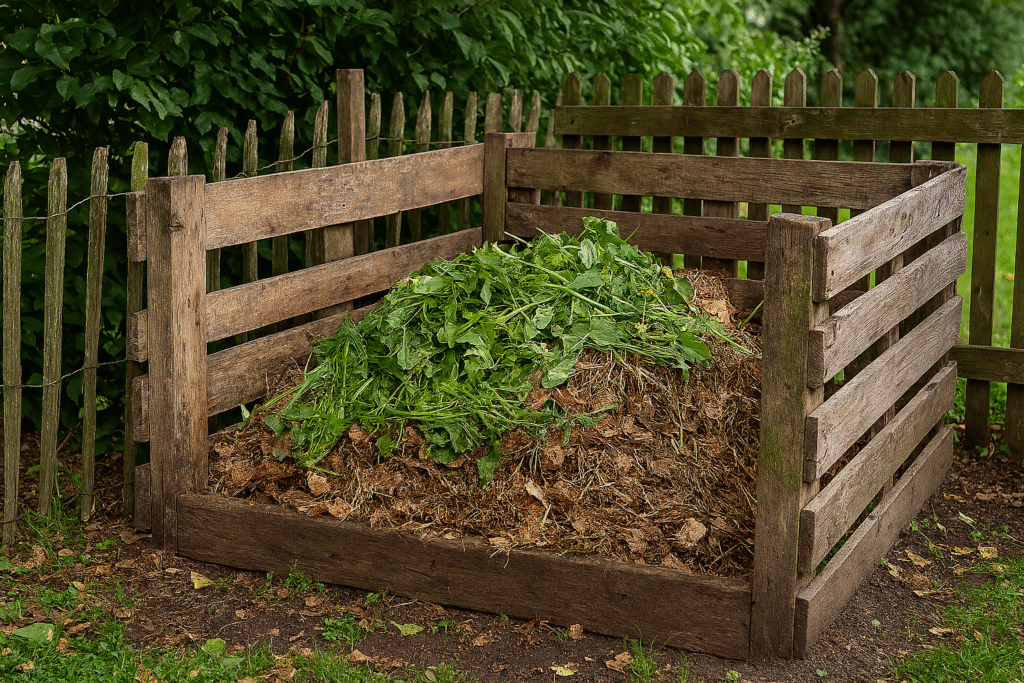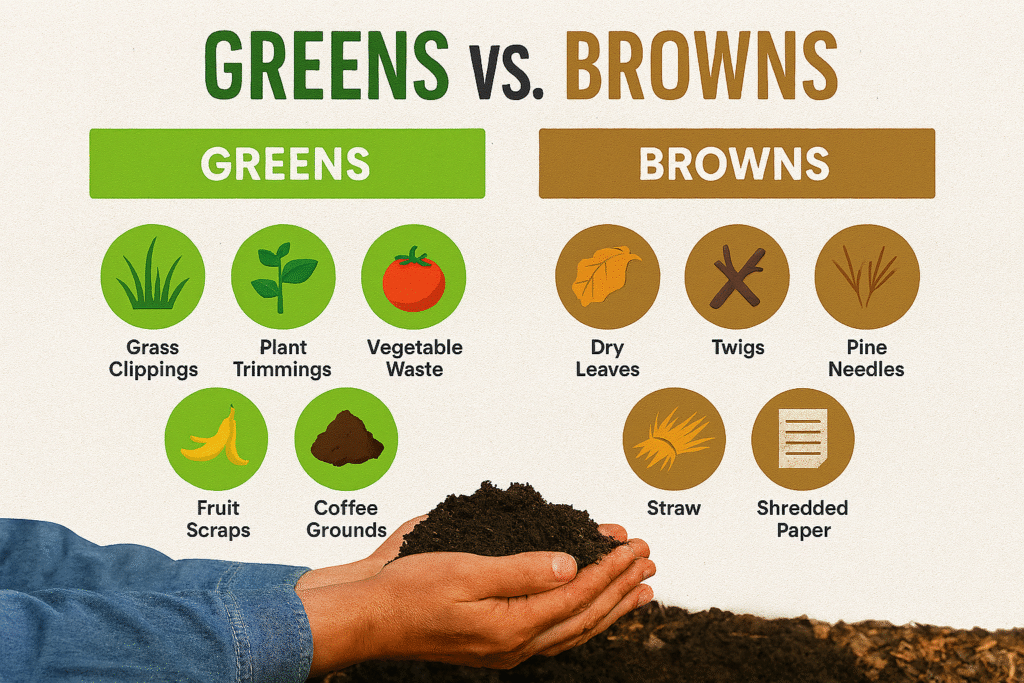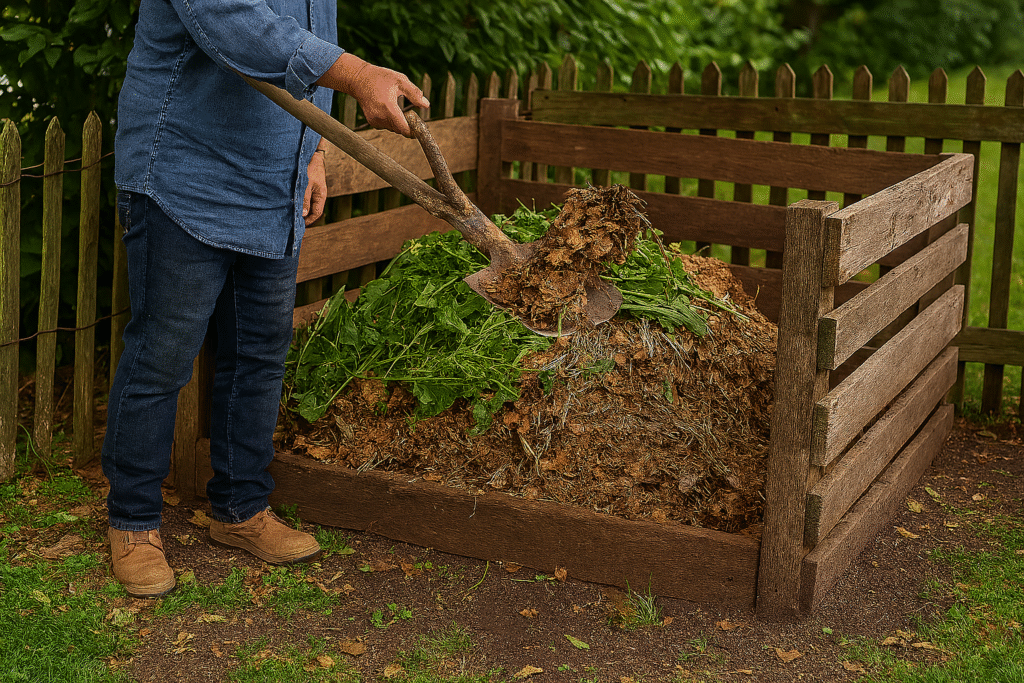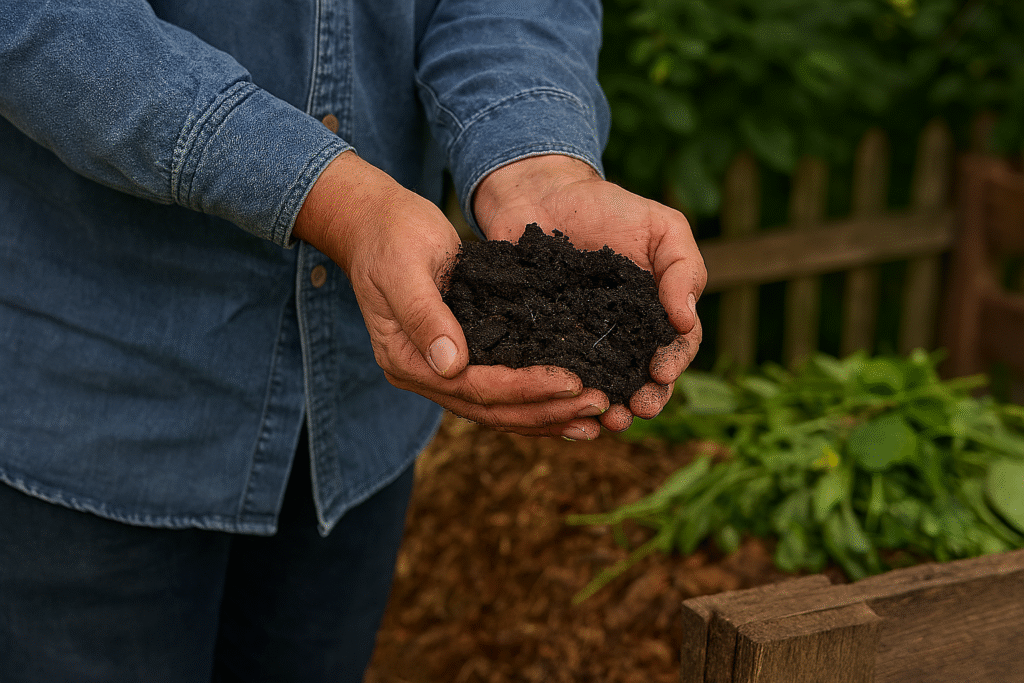Composting Basics: Greens, Browns, and Getting Started

Composting is one of the simplest and most rewarding homesteading practices you can start right in your backyard. Whether you’re trying to cut down on kitchen waste, build nutrient-rich soil, or simply take one more step toward sustainable living, composting checks all the boxes. The best part? You don’t need fancy equipment or years of experience—just a little know-how and consistency.
In this guide, you’ll learn how to set up your first compost pile or bin, what materials to add, what to avoid, and how to troubleshoot common issues.
Why Composting Matters
- Reduces waste: Nearly 30% of what we throw away can be composted.
- Improves soil: Compost enriches soil with organic matter, improving aeration and water retention.
- Saves money: No need for costly fertilizers when your garden gets “black gold” for free.
- Supports sustainability: Every pile you turn helps reduce landfill methane emissions.
Composting turns today’s scraps into tomorrow’s harvest.
Choosing Your Compost Setup
Before you begin tossing scraps in a pile, decide what type of composting system works for your space and lifestyle:
1. Compost Pile
- Best for larger backyards.
- Simple: just layer materials directly on the ground.
- Requires more turning and monitoring.
2. Compost Bin
- Ideal for small yards or urban settings.
- Keeps things tidy and contained.
- Can be purchased or DIY-built from pallets or barrels.
3. Tumbler Composters
- Fastest option since you can spin the compost.
- Great for those who want quicker results with less effort.
👉 Tip: If you’re new, start with a simple bin or pile. You can always upgrade later.
What to Compost (and What Not To)
A healthy compost pile needs a mix of greens (nitrogen-rich materials) and browns (carbon-rich materials). Think of it as a balanced diet for your compost.
✅ Compost These Items
- Greens (Nitrogen): fruit scraps, vegetable peels, coffee grounds, tea bags, fresh grass clippings.
- Browns (Carbon): dried leaves, straw, shredded cardboard, newspaper, sawdust.
- Other: eggshells, old flowers, hair, vacuum dust (natural fibers).
❌ Avoid These
- Meat, dairy, and oily foods (attract pests).
- Diseased plants or weeds with seeds.
- Pet waste.
- Synthetic materials (plastics, glossy paper).

Step-by-Step: Starting Your Compost

- Pick a Spot: Choose a dry, shady spot with good drainage.
- Layer Materials: Alternate layers of browns and greens (2 parts browns, 1 part greens).
- Add Water: Keep it damp, like a wrung-out sponge.
- Turn Regularly: Every 1–2 weeks, use a pitchfork or shovel to mix for aeration.
- Wait for “Black Gold”: In 2–6 months, you’ll have dark, crumbly compost ready for your garden.
Troubleshooting Common Compost Problems
- Bad Odor: Too many greens. Add more browns and turn the pile.
- Dry Pile: Add water or fresh greens.
- Slow Breakdown: Chop scraps smaller, turn more often, or add a compost activator.
- Pests: Cover food scraps with leaves or soil; avoid meat and dairy.
Using Finished Compost
Your finished compost should smell earthy and look dark and crumbly. Use it to:
- Enrich garden beds before planting.
- Top-dress lawns for healthier grass.
- Boost potted plants indoors and outdoors.
- Mix into homemade potting soil blends.

Other Interesting Reads
Conclusion
Composting is easy, beginner-friendly, and a game-changer for both your garden and the planet. With just a little effort, you can transform everyday scraps into soil so rich it feels like magic.
So grab those kitchen peels, rake up some leaves, and start your journey toward turning waste into growth. Your garden—and the Earth—will thank you. 🌍🌱
